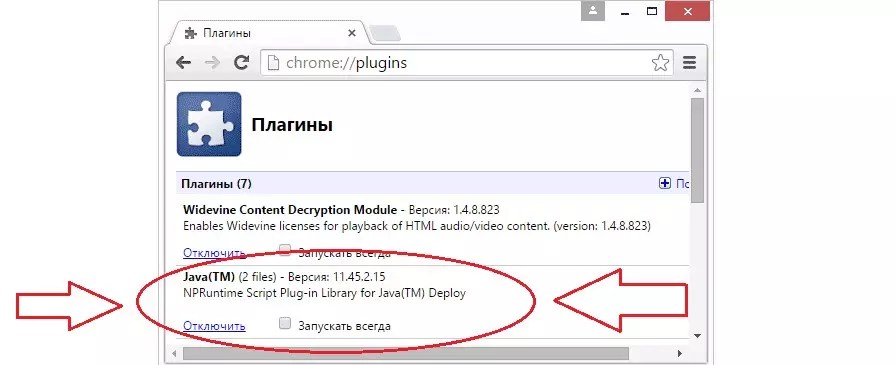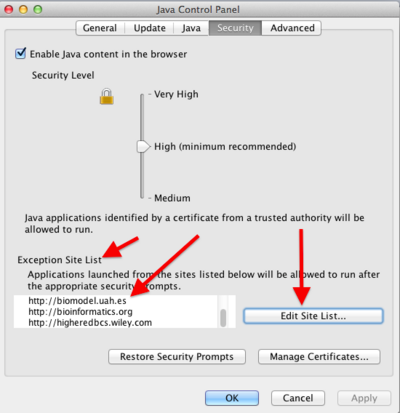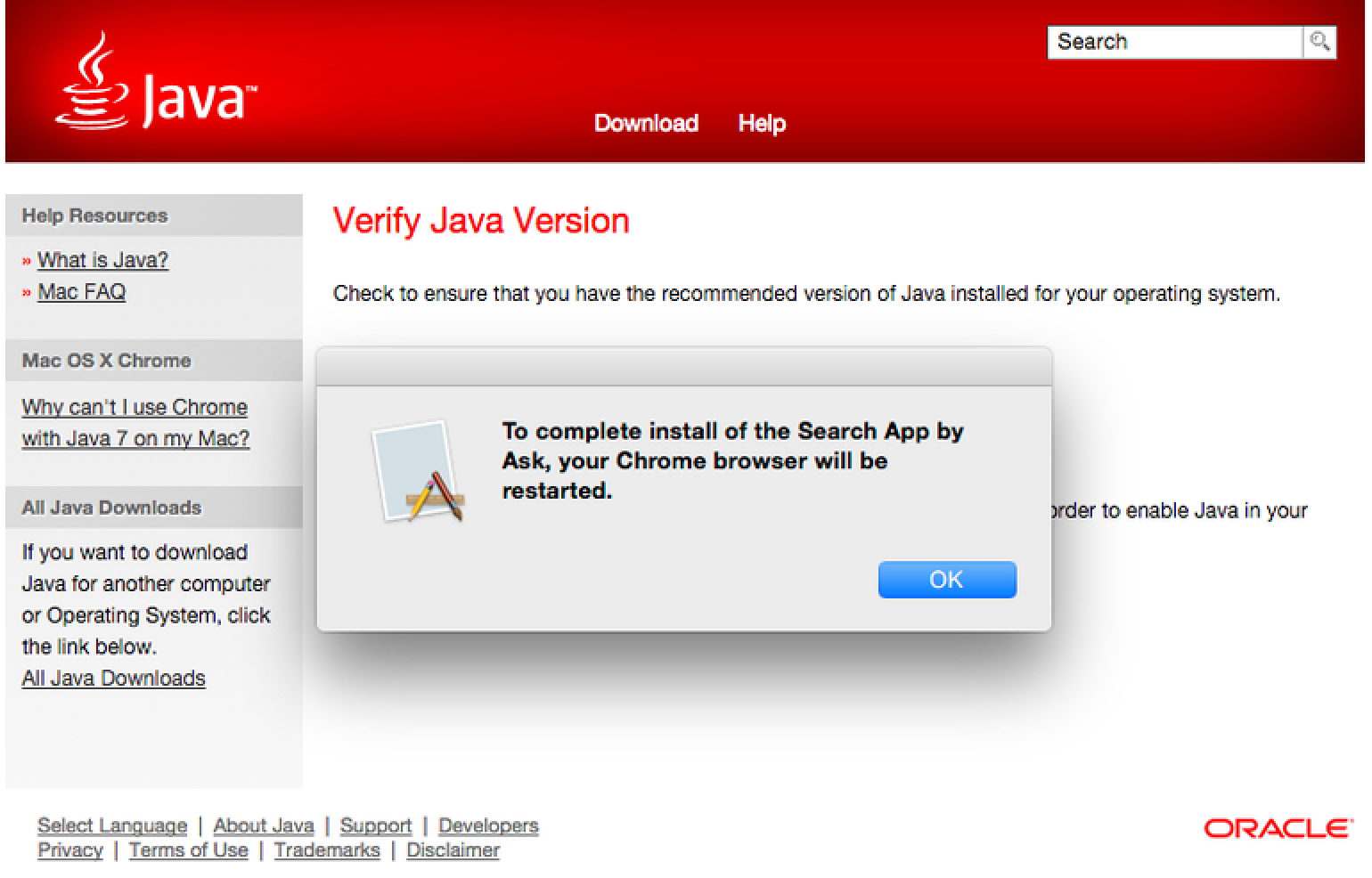Quick tutorial on how to disable java on Google's Chrome browser for the Mac. Open Preferences. Upon researching the pos/neg aspects of Java, I feel good about Java except for allowing it to be used as a plug-in in my browser. Having now loaded my newest Java app, I wish I could find and turn off the Java plug-in in my Chrome! Apparently, Chrome addresses a key in Windows registry when it looks for a Java Environment. Since the plugin installs the JRE, this key is set to a JRE path and therefore needs to be edited if you want Chrome to work with the JDK. Run the plugin installer anyways. But first of all, you need to install Java on your PC. Install Java For Chrome on Windows. How to use Java with Chrome steps: Install IE Tab chrome extension (it emulates Internet Explorer under your Chrome browser and allows to run Java and Silverlight). You'll find its icon 'e' in the right top corner. Easily start ReadyTalk meetings as a chairperson or co-presenter while using Windows or Mac. Removes ReadyTalk's reliance on Java. Host ReadyTalk meetings faster than ever on Windows or Mac. Supports all popular browsers for Windows (Internet Explorer 8+, Firefox, Chrome) and Mac (Safari, Firefox, Chrome).
On this page:
Important information about installing the Java plug-in
|
Windows

Smart hdd for mac. NOTE: Users should consult with their local IT support provider before installing or upgrading Java. Local applications may require specific Java versions.
Step One: Install or upgrade Java
Step Two: Verify that java is enabled in your web browser
- After installing or upgrading Java, completely quit, then relaunch the web browser.
- Clear the browser cache.
Mac OS 10.7 and higher

NOTE: Users should consult with their local IT support provider before installing or upgrading Java. Local applications may require specific Java versions.
Step One: Upgrade your java version
Step Two: Verify that java is enabled in your web browser
- After installing or upgrading Java, completely quit, then relaunch the web browser.
- Clear the browser cache.
- On Macintosh Google Chrome is incompatible with most Java web applications and web pages that use a Java applet, due to the fact that the Java plugin is 64-bit and Google Chrome is 32-bit.
Using Java In Chrome
Mac OS 10.6
NOTE: Users should consult with their local IT support provider before installing or upgrading Java. Local applications may require specific Java versions.
Awareness: Java 6 is no longer receiving security updates from Apple.
- If you are unable to upgrade your operating system and have applications that require Java, Java 6 is packaged with the Macintosh operating system. Java 7 is available only for Mac OS 10.7 and higher.
- Use Apple's Software Update to upgrade to Java 6 update 45.
- Apple has not released security fixes for Java 6 update 45 and known security issues exist.
- Apple's recommendation is to upgrade your operating system, then install Java 7.
Java Plug In Chrome Mac
Verify that java is enabled in your web browser
- After installing or upgrading Java, completely quit, then relaunch the web browser.
- Clear the browser cache.
Linux
Step One: Install or upgrade Java
Step Two: Verify that java is enabled in your web browser
Firefox
- Firefox 2.0 or later is supported
- If needed, enable java plugin for Firefox
- After installing or upgrading Java, quit then relaunch Firefox.
If needed, clear browser cache, clear Java cache
- Close all browser windows and quit or exit the browser. Then relaunch the browser and try again to access the site.
If you no longer need Java, uninstall it

Smart hdd for mac. NOTE: Users should consult with their local IT support provider before installing or upgrading Java. Local applications may require specific Java versions.
Step One: Install or upgrade Java
Step Two: Verify that java is enabled in your web browser
- After installing or upgrading Java, completely quit, then relaunch the web browser.
- Clear the browser cache.
Mac OS 10.7 and higher
NOTE: Users should consult with their local IT support provider before installing or upgrading Java. Local applications may require specific Java versions.
Step One: Upgrade your java version
Step Two: Verify that java is enabled in your web browser
- After installing or upgrading Java, completely quit, then relaunch the web browser.
- Clear the browser cache.
- On Macintosh Google Chrome is incompatible with most Java web applications and web pages that use a Java applet, due to the fact that the Java plugin is 64-bit and Google Chrome is 32-bit.
Using Java In Chrome
Mac OS 10.6
NOTE: Users should consult with their local IT support provider before installing or upgrading Java. Local applications may require specific Java versions.
Awareness: Java 6 is no longer receiving security updates from Apple.
- If you are unable to upgrade your operating system and have applications that require Java, Java 6 is packaged with the Macintosh operating system. Java 7 is available only for Mac OS 10.7 and higher.
- Use Apple's Software Update to upgrade to Java 6 update 45.
- Apple has not released security fixes for Java 6 update 45 and known security issues exist.
- Apple's recommendation is to upgrade your operating system, then install Java 7.
Java Plug In Chrome Mac
Verify that java is enabled in your web browser
- After installing or upgrading Java, completely quit, then relaunch the web browser.
- Clear the browser cache.
Linux
Step One: Install or upgrade Java
Step Two: Verify that java is enabled in your web browser
Firefox
- Firefox 2.0 or later is supported
- If needed, enable java plugin for Firefox
- After installing or upgrading Java, quit then relaunch Firefox.
If needed, clear browser cache, clear Java cache
- Close all browser windows and quit or exit the browser. Then relaunch the browser and try again to access the site.
If you no longer need Java, uninstall it
- [Uninstall Java 6 on Macintosh]
